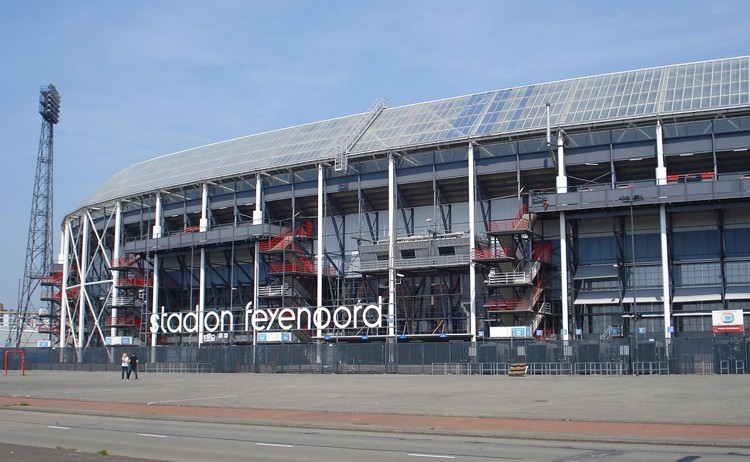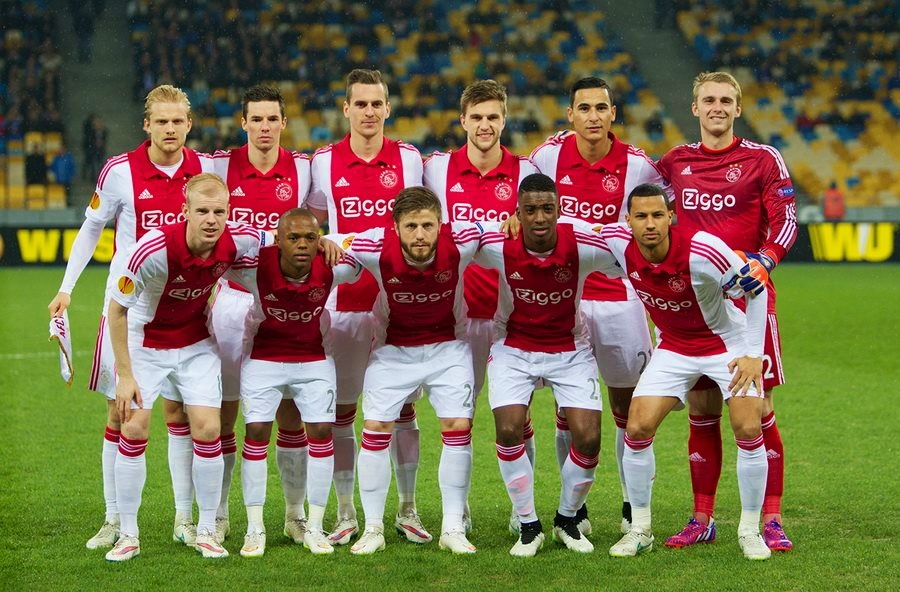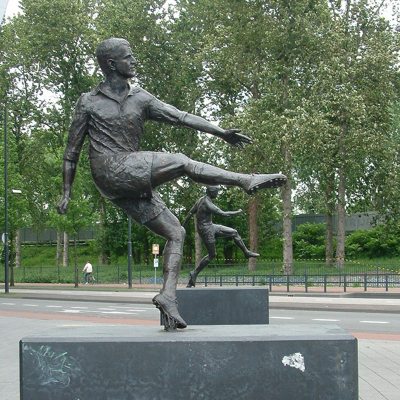Eredivisie Stadiums & Stats
 The Eredivisie, which means Honorary Division to you and me, is the highest division in the Dutch football league system.
The Eredivisie, which means Honorary Division to you and me, is the highest division in the Dutch football league system.
It was formed in order to nationalise the Dutch game and was originally a strictly amateur league, with any players found to have been paid money suspended by the Dutch FA. This change did not come without opposition.
There is also a virtual off-shoot called the E-Division which is played via FIFA 18. This started in 2016 and the games are even broadcast on television and online.
We’ll stick to real life in this section of the site, though, and we’ll tell you about the sort of stadiums you can expect to find in use in the Eredivisie, as well as how the league is set-up and operates, plus some information on its history and formation.
Enjoy.
Stadium Stats
| Stadium | Year Opened | Capacity | Ave Attendance | Record Attendance | Record Attendance Match |
|---|---|---|---|---|---|
|
AFAS Stadion
AZ Alkmaar |
2006 | 19500 | 15074 | 17023 | AZ Alkmaar v Arsenal 2006 |
|
De Kuip
Feyenoord |
1937 | 51177 | 47500 | 65427 | Feyenoord v Twente (1968) |
|
Johan Cruyff Arena
AFC Ajax / Netherlands |
1996 | 55000 | 50905 | 53502 | |
|
Philips Stadion
PSV Eindhoven |
1910 | 35000 | 33135 | 35000 | PSV v Man United (2015) |
Team Stats
| Team | Year Founded | Nickname | Team Owner |
|---|---|---|---|
| AFC Ajax | 1900 | de Godenzonen (Sons of the Gods),[1][2] de Joden (the Jews), I Lancieri (The Lancers), Lucky Ajax | AFC Ajax NV |
| AZ Alkmaar | 1967 | Cheeseheads | René Neelissen |
| Feyenoord | 1908 | De club aan de Maas (The Club on the Meuse), De Stadionclub (The Stadium Club), De Trots van Zuid (The Pride of the South), De club van het volk (The Club of the People) | Feyenoord Rotterdam N.V. |
| PSV Eindhoven | 1913 | Farmers, Red and whites | Foundation PSV Football |
Eredivisie Stadiums

Dutch football is an interesting topic to discuss. On the one hand the national side has been moderately successful over the years and a handful of the domestic teams have performed well on the European stage; on the other hand it would not be unfair to suggest that the Netherlands hasn’t produced the quality of teams it should have considering the caliber of some of the players that have emanated from Holland. The stadiums in the country reflect this paucity of genuine success from the clubs located in the country.
Stadiums in Holland range from capacities of over 50,000 down to grounds that can house less than 10,000 supporters. The styles of stadium are vastly different, too. The Amsterdam Arena, home to the country’s most successful club, Ajax, is a remarkably impressive and imposing structure that dominates the city’s skyline. Stadion Feijenoord, unsurprisingly the home ground of Feyenoord, is a futuristic looking building with solar panels located nearby in order to give it power.
Other, smaller stadiums look like little more than football pitches surrounded by unimposing stands, and you might not even realise they made up a football ground unless you took a closer look. Mandemakers Stadion, the home of one time Eredivisie side RKC Waalwijk, is surrounded by trees and greenery. Most of the grounds follow the ‘European Style’ of having a bowl of continuous seating, though some take a leaf from the English stadium book of having a separate stand running along each edge of the pitch.
About The League

The order of the league is decided by the addition of points in the standard format you’ll probably be used to from other leagues. Winners of matches get three points and the losers get zero. Should the match be a draw then the teams collect one point each. The number of goals scored and conceded are also added together should there come a situation where teams are tied on points and need to be separated. In that instance, the goal difference of the team can be taken into account.
The most confusing aspect of Dutch football is how the relegation and promotion of teams works. The simple part involves the bottom team in the Eredivisie and the top team from the Eerste Divisie (the second-tier of Dutch football) simply swapping places. After that the next two clubs at the bottom of the top-flight enter a play-off system with the other top clubs from the Eerste Divisie. The play-offs are split into two groups and each contains one Eredivisie team and three second-tier teams. They then play a mini-league against each other with the winner of each group playing in the top-flight the following season, and all of the other teams entering the Eerste Divisie.
Eredivisie History

From the moment that Dutch football was founded up until the invention of the Dutch league in 1954, the winner of the Dutch league championship was decided by a play-off system featuring a small number of clubs who had won their regional league in the past. It was an amateur competition and the Dutch Football Association, the KNVB, suspended players who had either received a salary or who the club had paid money for.
This suspension included forbidding players from playing in the Dutch national team, so many talented players decided to leave the Netherlands in order to earn money playing football professionally abroad. When the North Sea Flood of 1953 caused devastation in parts of Holland these players plying their trade abroad decided to host a charity match against France. The KNVB refused to sanction it, but the 2-1 victory for the Dutch players showed the football watching public in the Netherlands what could be achieved through the professionalisation of the game.
Consequently, a rival football association and league, the NBVB, was set-up in 1954. The KNVB reacted by meeting with the chairman of the amateur clubs who feared their players would abandon their teams for this new league. The result of the meeting was to allow, albeit reluctantly, the acceptable compromise of semi-professionalism within the Dutch game. The two leagues got underway and lasted for eleven rounds before a merger was agreed in November of 1954. Both of the leagues were cancelled in order to allow the formation of a new, combined competition. A number of new clubs also sprang up as the amateur and professional teams decided to merge with each other.
In 1956 the KNVB abandoned its previous regional league system and the Eredivisie was born. The best eighteen teams in Holland were admitted and competed against each other for the title of Dutch football champion without the need to have any sort of play-off. In a sign of what was to come in the future, Ajax won the first ever Eredivisie championship. It was also in this inaugural season that Coen Dillen scored 43 goals, a record that still stands today.
